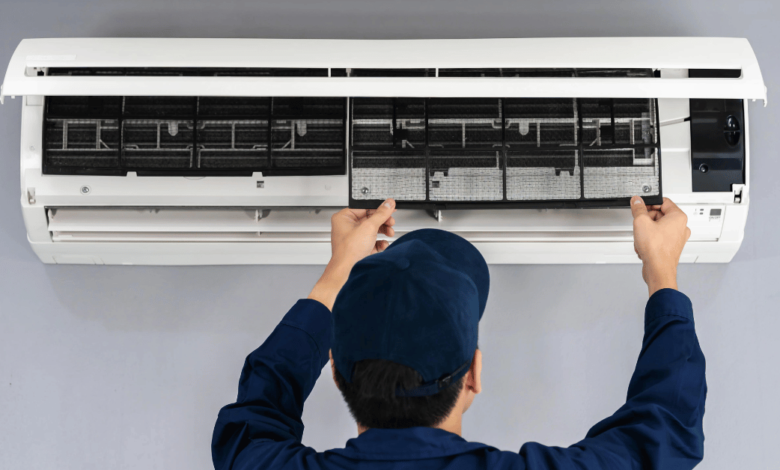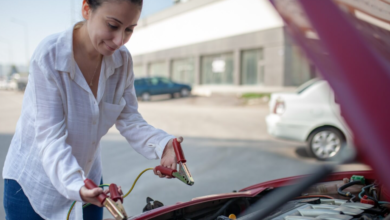The Role of HVAC in Reducing Mold and Mildew Indoors

Mold and mildew growth is quite disturbing and health hazardous. They can grow in any moist area of your home and inside your HVAC system. The excessive moisture, water leaks, inadequate maintenance, and poor ventilation system mainly encourage the growth of mold and mildew.
A well-performing and efficient HVAC system can help to reduce the growth of mold and mildew. As the HVAC system ensures balanced humidity and improved air quality, it helps to reduce mold growth. In this post, I’m going to share in detail about mold and mildew growth in your home and how to prevent mold with HVAC systems.
| Key TakeawaysThe advanced and right HVAC system can help you reduce mold and mildew growth inside your home and the system. The roles an HVAC performs to reduce mold and mildew growth are:Keeps the humidity level between 30% to 50%Provides balanced and consistent indoor temperaturesEnsures proper ventilation Purifies the indoor airKills the mold and mildew inside the system with Anti-microbial coatings and UV lights Always keep the mold spores away through maintenance services. So, hire an HVAC professional like The Chill Brothers and prevent mold with HVAC systems. |
Main Causes of Mold and Mildew Growth
Mold and mildew are similar kinds of fungus. They typically grow in moist, warm, and poorly ventilated areas. Molds are mostly greenish, black, or brown. You may notice these on your walls, ceilings, or other surfaces. Mildew usually grows on flat surfaces which is gray or white.
Both mold and mildew damage the walls, ceilings, and corners of your home. These cause health issues like allergies, respiratory issues, etc. Here are the main reasons why mold and mildew grow indoors:
- If your indoor environment has humidity levels above 60%, it will cause mold and mildew to grow.
- Leakage in pipes, roofs, or other things can make the area wet and moist. This can be the perfect condition for molds to grow.
- If you have some water-damaged products or damp building materials, they create a wet and soggy environment for mold and mildew growth.
- Mold grows better in organic compounds. If your house has materials made of wood, paper, fiber, or fabric, it will increase mold growth.
- Dust and debris act as nutrients for mold and mildew. Areas unfiltered from these particles can grow more mold.
- If your living place does not get any sunlight, it would be prone to mold growth.
- Inadequate air circulation or poor ventilation system causes mold and mildew to grow faster.
Already suffering from existing mold in your home? Rely on professional HVAC solutions for mold reduction in your home.
Harms Caused by Mold and Mildew Indoors
Mold and mildew growth inside your home may create serious problems. This harms your health as well as your house. Here are the potential harms you may face due to mold and mildew growth:
| Harms Caused by Mold and Mildew | Brief Description |
| Allergic Reactions | Mold growth may cause allergic reactions to you. You may notice skin irritation, sneezing, itchy eyes, etc. |
| Respiratory Issues | The mold and mildew affect the respiratory system. Those who already have issues like asthma are at severe risk. |
| Immune System Weakening | Toxic mold exposure has a severe impact on your health. It may gradually affect your immune system and weaken it. |
| Property Damage | The mold and mildew can damage the home structures. It may ruin the materials like wood, drywall, ceilings, furniture, and so on. |
| Unusual Odors | The growth of mold and mildew creates an unusual odor inside the home. Over time this odor may increase and make it hard to live there. |
| Disrupted Living Conditions | These will ultimately make your living space uncomfortable and uninhabitable. |
To avoid these harms, protect your home with The Chill Brothers. HVAC experts like them will suggest an efficient HVAC and provide maintenance services to get rid of the existing mold and mildew.
How HVAC Reduces Mold and Mildew Growth
You can prevent mold with HVAC systems. However, your HVAC has to be efficient and well-performing. Also, ensure proper installation and maintenance of HVAC to get the optimum results.
Here are the specific roles of HVAC systems to reduce the growth of mold and mildew:
1.Ensures Balanced Humidity Levels
An efficient HVAC system with built-in dehumidifiers keeps the humidity level under control. Normally, the humidity level should be 30 to 50% to reduce excessive moisture from the air. Many advanced models of HVACs have Humidistats. It helps to monitor the humidity level and adjust it accordingly.
That’s how HVAC balances humidity levels. This in turn reduces the possibility of mold and mildew growth.
2.Proper Ventilation and Air Filtration
An HVAC system ensures smooth airflow and proper ventilation of the stale air. Some HVACs use ERV systems to improve ventilation and airflow. Moreover, advanced HVACs use HEPA or MERV-rated filters. These help to trap mold spores and other pollutants. So, the growth of mold and mildew is reduced.
3.Controls the Temperature
The thermostat in the HVAC system controls the temperature. It allows you to experience a consistent and balanced indoor temperature. This balanced temperature reduces the chance of mold and mildew growth inside your house.
4.Antimicrobial Coatings and UV Lights
Some upgraded HVACs include smart features such as antimicrobial coatings and UV lights. The antimicrobial coatings on the HVAC components like coils, ducts, or drain pans inhibit mold and mildew growth.
Also, some systems come with UV lights, and you can install them externally too. UV lights within the HVAC kill the mold, mildew, bacteria, and other fungus inside the system. So, your system will be protected from mold and mildew.
5.Maintenance of HVAC
Though it is not the role of HVAC, still homeowners conduct regular maintenance and tune-ups. This activity of the HVAC cleans all parts or components of the HVAC. It also cleans out dust, dirt, and mold spores. So, this maintenance helps to reduce the growth of mold and mildew inside the system.
Effectiveness of HVAC Components for Mold and Mildew Prevention
Different components of the HVAC system work to prevent mold and mildew growth. The most effective components include:
- UV light air purifiers
- Whole house dehumidifiers
- Humidistats
- High-efficiency air filters such as HEPA or MERV-rated filters
- Insulated ducts
- Proper ventilation system
- ERVs
- Clean condensate drain pans
- Smart thermostats etc.
Here is a chart showing the effectiveness of the HVAC components to prevent mold and mildew.
This shows that the right and advanced HVAC system can help you reduce mold and mildew growth. It will allow you to experience a healthy and safe indoor environment. So, protect your home with The Chill Brothers, the HVAC expert. They will help you choose and install the right HVAC to eliminate mold and mildew growth.
Final Thoughts: Protect Your House from Mold and Mildew
Use an advanced HVAC system to protect your home from mold growth. Consult an HVAC expert like The Chill Brothers to pick the right HVAC system. Remember to pick one that has built-in dehumidifiers, smart thermostats, HEPA or MERV-rated filters, antimicrobial coatings, and UV lights.
This type of HVAC will control the humidity and temperature. It will keep the indoor air comfortable and purified. So, the mold, mildew, or other fungus inside your home and the system will not be able to grow. Try to keep your HVAC system clean and healthy. Conduct maintenance and tune-ups to regularly inspect and get the system functioning. This is how you can get rid of the mold and mildew growth.





